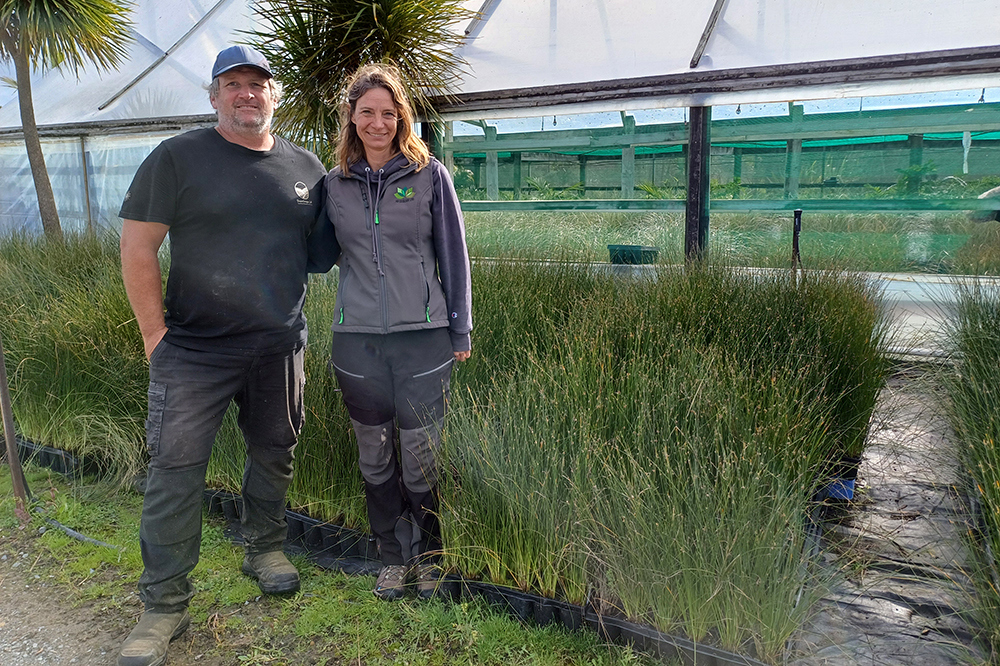Story
Protecting our dunes with native plants
Restoring the health of the dunes is key to protecting the land from coastal hazards and CoastCare groups throughout Te Taitokerau will be coming together from June to August to plant a home-grown remedy.
Te Taitokerau has more than 3000km of coastline with hundreds of kilometres of sandy shorelines. On these open coast beaches, sand dunes are vital to protecting the land from coastal hazards, but many have been damaged and eroded and the small proportion that remain are under threat. Pests, weeds and direct human impacts such as inappropriate vehicle use and coastal development are all damaging to our dunes.
In Te Taitokerau, we are fortunate to have two native “sand-binding” plants, spinifex or tihetihe/kowhangatara and pīngao, that are adapted to grow in the harsh dune environment and are a crucial part of a healthy dune system. They are very effective at trapping sand, reducing the loss of sand inland and rebuilding dunes after erosion. Both species grow naturally on our dunes but have been lost in many places due to development, encroachment of weed species, and damage from vehicles and pest animals such as rabbits.
This year CoastCare groups will plant an estimated 18,000 plants on dunes around Northland. This fantastic community effort will have lasting implications for the health of our dunes and beaches. But where do all these plants come from?
There have historically been very few nurseries in Aotearoa growing spinifex and pīngao, as they require very different growing conditions to other native species. However, increased demand for dune plants has led to nurseries across the country learning the specialised techniques required, including some in Te Taitokerau.
One of these nurseries is based in Ngunguru, founded by ecologist Amy Bazeley, who has 25 years of experience in conservation and restoration. Together with co-founder and nursery manager Shaun ‘Chook’ Johnson, a third generation local passionate about growing plants to protect our beaches, they grow eco-sourced plants, focusing exclusively on dune plants.
Amy explains some of the challenges in growing native plants for the dunes: “It’s not like normal growing. The nursery must be within 3km of the coast as the seedlings can’t be exposed to frost. We need flat ground and air flow for the plants. Spinifex and pīngao have evolved to meet specific local demands and so we must set up our growing conditions to mirror these. It’s challenging, but I like the challenge of it”.

Chook and Amy at the nursery.
Eco-sourced plants are grown from seed collected in a specific local area and then returned to that area for planting, to ensure they adapt to local conditions.
Despite the challenges, Amy and Chook’s passion for the plants and for dune restoration shines through; “Why do it? Why wouldn’t we want to have some of the best dune life resilience here in Te Taitokerau. It’s so important to protect and preserve our dunes”.
Anyone who wants to help protect Te Taitokerau’s unique and special coastline can join a CoastCare group. If there isn’t one in your local area, you could set one up with others in your community. You can find out more information at: www.nrc.govt.nz/coastcare or contact the CoastCare team at: coastcare@nrc.govt.nz
CoastCare groups are planning their winter dune planting dates, with the following scheduled and more to come:
- Friday 7 June (back-up date 8 June) – Langs Beach with Langs Beach CoastCare Group
- Saturday 8 June – Tern Point planting day at Mangawhai Wildlife Refuge
- Tuesday 18 June – Long Beach (Oneroa Bay), Russell, with Russell Landcare Trust and Russell School
- Wednesday 19 June – Matapōuri, with Department of Conservation and Te Whanau a Rangiwhakaahu Hapū
- Friday 21 June –Pataua Island, delivered by Aki Tai Here, meet on the road by Papuni Dunes at 9am, RSVP to: tari@akitaihere.org
More information on sand dunes and dune plants, including ecosourcing plants, can be found at: www.nrc.govt.nz/sanddunes





